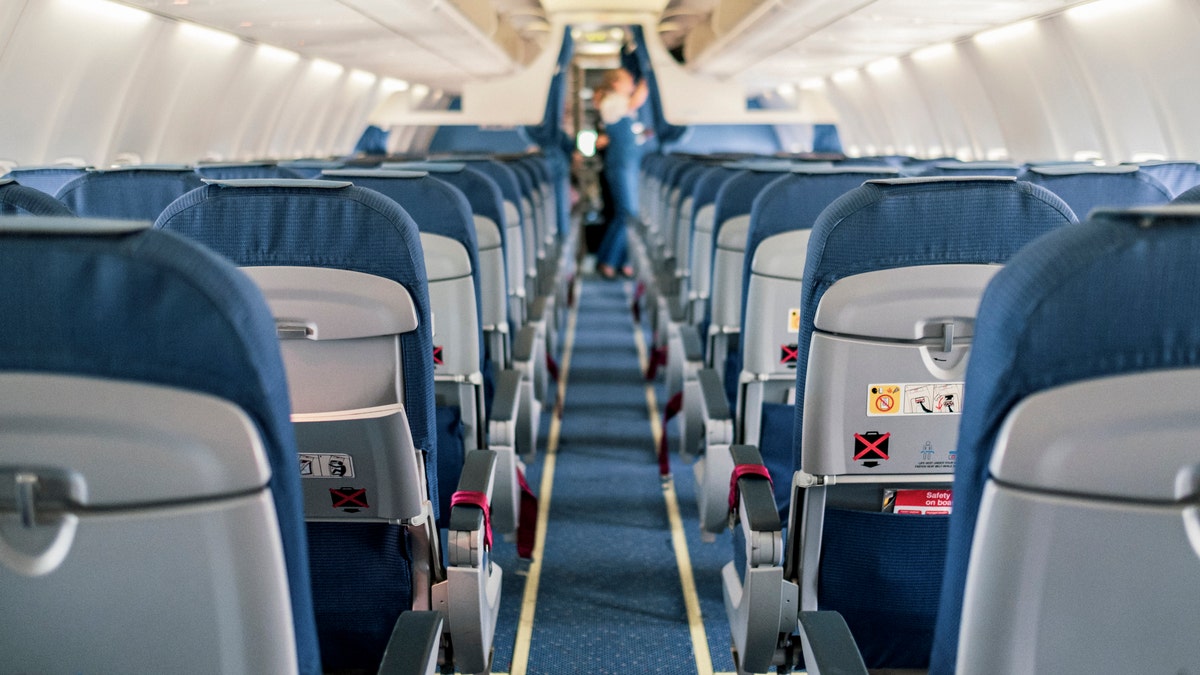Fox News Flash top headlines for August 19
Fox News Flash top headlines are here. Check out what's clicking on Foxnews.com.
The odds of catching novel coronavirus on an airplane with infected passengers appear to be relatively small, though still possible, according to a new report.
German researchers told of the health outcomes for more than a hundred passengers on a flight in a report recently published in the journal JAMA Network Open.
The German researchers reported on the health status of 102 passengers who boarded a Boeing 737 flight in Tel Aviv, Israel, on March 9, according to the study. The flight, just over 4.5 hours, was going to Frankfurt, Germany, before strict COVID-19 protocols were in place, such as mandating masks for crew and passengers as well as the restriction of congregating in aisles. (Airlines have since instituted those policies in an effort to prevent the spread of novel coronavirus.)
INHALED DRUG SHOWS PROMISE IN CORONAVIRUS TREATMENT: STUDY
Several days before taking the flight, seven members of a 24-person tour group on the plane came unknowingly in contact with a hotel manager who tested positive for COVID-19. The group was notified upon landing and tested, according to the study. Seven members of the group were positive for COVID-19 and referred to as index cases in the study. Four were symptomatic, two pre-symptomatic, and one was asymptomatic.
The study’s investigators followed up with 71 of the other 78 passengers aboard and stated in the report that two passengers who were seated within two rows of an infected tour member tested positive, likely due to an onboard transmission of COVID-19.

The team of researchers also noted how the plane’s airflow system may have limited the number of potential COVID-19 cases. (iStock)
“We discovered 2 likely SARS-CoV-2 transmissions on this flight, with 7 index cases," researcher Dr. Sandra Ciesek, of the Institute for Medical Virology at Goethe University in Frankfurt, stated in the report. “These transmissions may have also occurred before or after the flight.”
“The risk of transmission of droplet mediated infections on an aircraft depends on proximity to an index case and on other factors, such as [the] movement of passengers and crew, fomites, and contact among passengers in the departure gate," the researchers explained.
The team of researchers also noted how the plane’s airflow system may have limited the number of potential COVID-19 cases.
“The airflow in the cabin from the ceiling to the floor and from the front to the rear may have been associated with a reduced transmission rate. It could be speculated that the rate may have been reduced further had the passengers worn masks," they wrote.
Dr. Aaron Glatt, chief of Infectious Diseases of Mount Sinai in New York, told Fox News the report is consistent with other research findings.
“Airplane trips, especially if they are of a longer duration, have the potential to transmit infection from an infected person to the people sitting in their immediate vicinity," he said.
HOMEMADE CORONAVIRUS FACE MASKS SHOULD BE TWO OR THREE LAYERS TO STOP SPREAD OF VIRUS, STUDY FINDS
“The good news, however, is that even with no attempts to prevent spread, [the] spread was limited to only those in close proximity. Plus, nowadays with a better understanding of viral transmission, and recognizing the importance of masking and social distancing as possible, the likelihood of transmitting COVID-19 to someone on an airplane is very low," the epidemiologist added.
If one chooses to fly during the pandemic, "I recommend that people mask and social distance as possible in the airport and on the plane. Certainly, someone ill or recently exposed to COVID should not be traveling on a plane," Glatt said.
Glatt, also a fellow of the Infectious Diseases Society of America, concluded: “It is our responsibility to make sure that not only are we are safe but everyone else is safe as well. The more people that wear a mask on the plane trip, the better everyone will be.”


